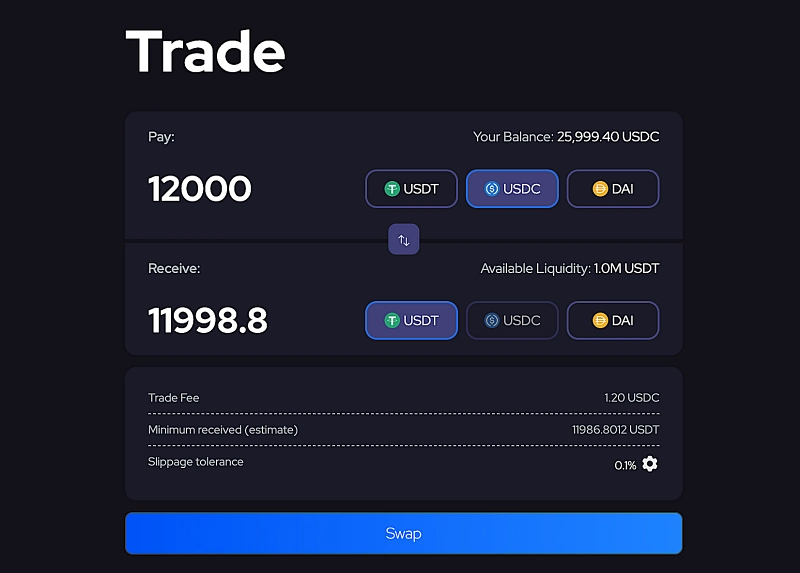Fully Pegged
Through the assumption of a fully pegged stable coin ecosystem, Aqualis can assume that there are no longer price impacts. However, a variable trading fee will be utilized for small variations from the peg. These fees will be split between depositors and protocol revenue, which is detailed in our distributions page.
Variable Trading Fee
This variable trading fee allows for some level of volatility in stablecoins without impacting trading capabilities. The spread may be adjusted in the future based on the stability of stablecoins. More information in the Aqualis Fees section of the docs.
Variable Deposit/Withdrawal Fees
The SP will charge a small fee with all deposits and withdrawals based on the liquidity ratio of the deposited stablecoin. Suppling a higher liquidity stablecoin will incur higher fees, whereas supplying a low liquidity stablecoin will incur lower fees. It will be calculated as a base fee + tax or base fee - rebate. More information in the Aqualis Fees section of the docs.
SP vs Concentrated Liquidity
Concentrated liquidity is a powerful mechanism initially introduced by Uniswap V3 that allows liquidity providers to choose what price they want to provide liquidity at. The SP algorithm essentially replicates a concentrated liquidity pool with 100% of liquidity centered at the peg. However, due to the dynamic asset allocation algorithm, the risks associated with a stablecoin depeg is actually less in the SP compared to a concentrated liquidity model, more information can be found on our depeg event page.
Depeg Event
In the event of a depeg, trading and deposits will cease in order to prevent users from minting SP tokens with an undervalued token. However, users will still be able to withdraw, with funds coming from both the SP and lending pool, ensuring users can still retrieve their funds even in the event of a depeg.

